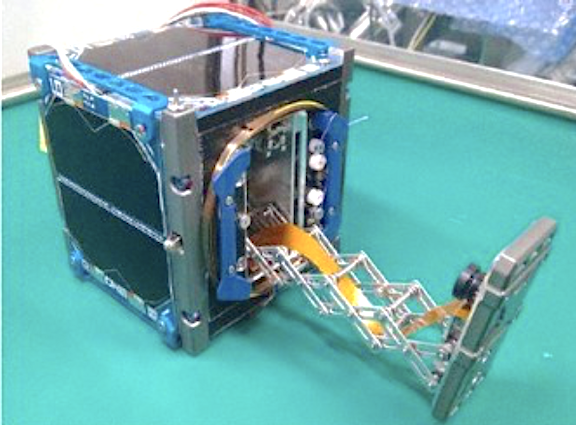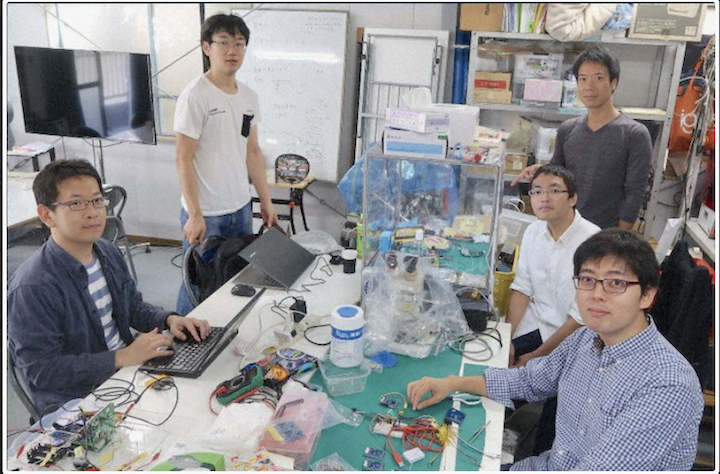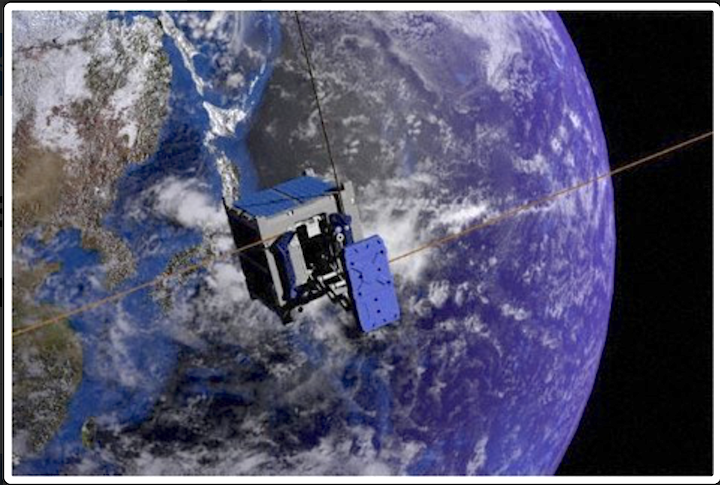
A miniature satellite capable of taking pictures of itself, developed as a passion project by company employees, students and others in Japan, is being launched in the United States during the early dawn hours of February 21 (Japan time).
The satellite has a built-in telescopic arm with a camera to take selfies. An earlier version was first developed and launched in 2018, but in that instance, communication between the satellite and equipment on the ground could not be established. Will the amateur group’s second attempt be a success, and will the satellite be able to send its selfies back to Earth?
The people behind the project’s development are members of space enthusiast group Ryman Sat Project, based in Tokyo’s Edogawa Ward. The satellite is a cube measuring 10 centimeters on each side, and it weighs a little over a kilogram. The funds to make it were raised through a mix of crowdfunding and members’ own contributions, and the team spent about three years developing it.

Ryman Sat Project was founded in 2014, and currently boasts about 790 members. Although a love of space brought them together, they’re all amateurs when it comes to space-related development. Through a mix of trial and error, along with reading essays and specialist books on the subject, they have challenged themselves in space-related activities, such as developing satellites.
They’ve nicknamed the current satellite “selfish” — partly a reference to the term selfie and partly from their “selfish” desire to see the project through.
The selfie idea came from their desire to see the satellite they had built floating in space. The unit’s arm for taking pictures can extend out about 10 centimeters and retract back in. Although there’s no need for it to retract for the photographs, the team said they decided to make it able to do both, because “it looks smarter if it can go back to its original position and close than it does if the arm is left stretched out.”

For the wireless equipment, the team decided it would be more interesting to make their own than to use existing products, and after toiling away they managed to create something about half the size of what had been available, at a cost of about two-thirds of what they would have paid. As a result, it became possible to put in new equipment such as position control mechanisms. The team also tried to devise cool designs for its solar energy panels and camera shutter.
In response to the failure of communications on the first satellite, among other issues, the team has done thorough tests ahead of the main event this time. They have also tried to foresee potential equipment failure, and incorporated the same kind of cause analysis and evaluation that experts use in their designing methods.
The completed satellite will first be delivered to the International Space Station via an Antares rocket launched by a U.S. firm. After arriving, it will be released into space from the Japanese Experiment Module Kibo. If all goes to plan, the satellite’s antenna should unfurl about 30 minutes later and send signals to Earth. From there, the arm should extend as per instructions issued from the ground, and its camera shutter is expected to release.
The Ryman Sat Project group’s project manager, Ryuichi Mitsui, told the Mainichi Shimbun, “This kind of selfish project is something you can’t do unless it’s a pursuit. We had to value our feeling of wanting to do it without fear of failure. But, to try and make it a success precisely because it’s our pursuit, our members had to review the project and discuss it not just on weekends, but on weeknights, too.”
With the spread of the new coronavirus, the team members are unable to see the launch at the spot where it will happen, but their project manager said, “I want to observe that moment online with the other members.”
At a press conference ahead of the launch, the team was asked if they had any plans for the selfies the satellite takes. Their project manager responded hesitantly, “We’re not considering anything in particular. Maybe it could be someone’s (desktop) wallpaper, or used in a calendar? If you have any good ideas, please let us know.” Rather than focusing on how the photos are used, it seems the very process of having pictures sent to Earth and being able to celebrate them together is everything for the team.
(Japanese original by Etsuko Nagayama, Opinion Group)
From Mainichi
